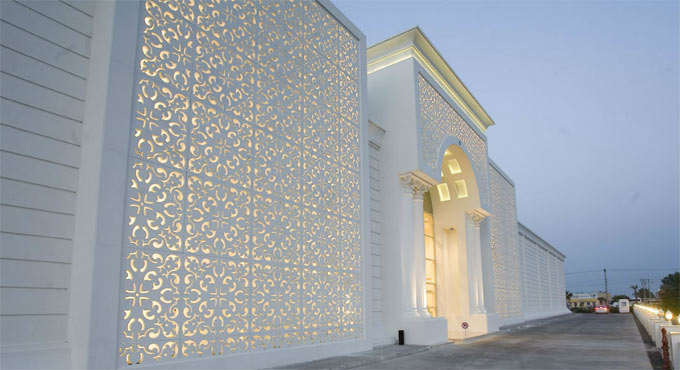
Properties and benefits of Glass Fiber Reinforced Concrete (GFRC)
GFRC stands for an engineered concrete that can be used in concrete products different ways ranging from ornamental structures, fountains, domes, and planters. GFRC is also broadly utilized for decorative panels.
Composition of Glass Fiber Reinforced Concrete (GFRC)
Glass fiber reinforced concrete composites comprise of high strength glass fibers which are enclosed by a cementitious medium. In this shape, both the fibers and the environment retain their natural individual chemical properties. However, the resultant concrete contains better properties that cannot be obtained if either of the components is applied separately.
The glass fibers belong to the primary elements that bear the load, whereas the enclosed matrix retains the fibers in the preferred position and direction. The medium allows transmission of the load on the fibers, and shields them from the damage because of the environment.
Glass fibers are incorporated into the matrix either in constant or irregular lengths. The laminate is considered as the mostly recognized shape in which glass fiber reinforced composites are employed in structural applications. This form is produced with the compilation of fine fiber layers and a matrix into the required size. The location of fiber in each layer, and the stacking sequence of the layers, are applied to make a series of mechanical properties of the composite materials.
All these properties are integrated with the fact that GFRC appears as solid concrete, even if it weighs only one-third of the original solid concrete weight. It is perfect for outdoor or indoor usages where lightweight and long-lasting concrete is necessary. Such applications comprise of decorative structures, fountains, domes, planters, etc.
Glass Fibers
Glass fiber contains 200-400 separate filaments, lightly bonded so as to form a stand. These stands can then be sliced into different lengths and applied for different applications. In industry, the glass fibers are mainly used for cement or mortar matrices reinforcing as well as utilized for thin-sheet products manufacture. The traditional mixing methods for concrete only facilitate about 2% (by volume) of fibers containing a applicable length of 25mm. E-glass is recommended as the most common type of glass fibers for general applications. Polymers are also included in the glass fiber mixes with the purpose of making physical properties like moisture movement better.
Advantages of Glass Fiber Reinforced Concrete: The characteristics of GFRC are altered on the basis of the design of mix, fiber content, and the methods used for manufacture. The use of GFRC has become popular due to its numerous favorable properties:
? GFRC is examined in the laboratory and also in the actual installations, and is predicted to subsist as long as pre-cast concrete. In various ecological conditions, like when susceptible to salts or moisture, GFRC is prone to function efficiently because of the nonexistence of steel reinforcement that may decay.
? It is considerably light in weight with reference to the traditional stones. The installation process is rapid and smooth.
? GFRC contains the properties to be cast into almost any shape.
? GFRC contains materials which are implausible to burn. The concrete functions as a thermal regulator when vulnerable to fire and safeguard the materials from the flame heat.
? GFRC is thin and robust, with weight being 75% to 90% less compared to solid concrete. Less weight allows easy and fast installation, and also reduces the load applied on the structure. The light weight and tough material also decreases the transportation expenses, permits flexibility in design, and minimizes the effect on environment.
? Superior strength improves the capacity to undergo seismic loads.
? GFRC is less susceptible to weather effects and has good resistance capacity to freeze thaw as compared to the normal concrete.


